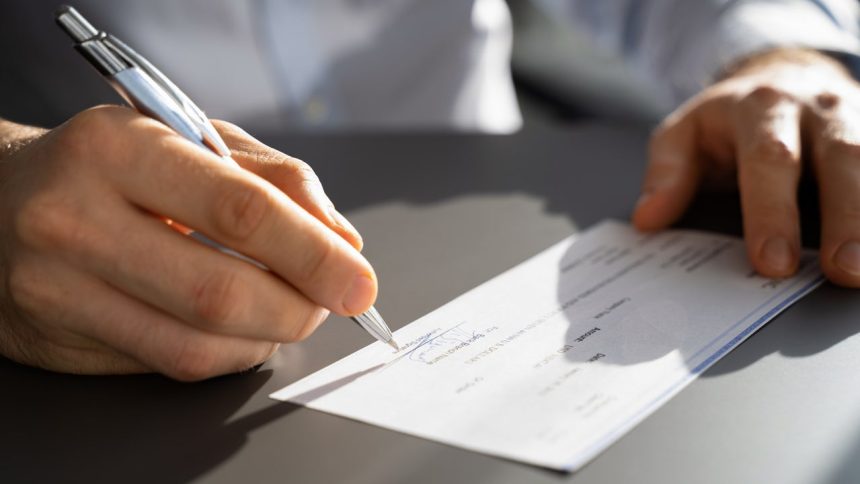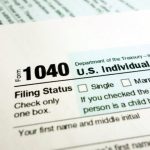Key takeaways
- While electronic payments are more frequently used, checks are still a valid form of payment, making it important to know how to fill out a check correctly.
- When writing a check, it’s critical to know how to fill one out accurately and legibly, as any errors can cause issues with the transaction.
- To organize your personal finances, be sure to keep a record of checks written and payments made.
Although it is easy to reach for a debit or credit card these days, there are still times when a check is needed. However, if you don’t know how to fill out a check, you could risk completing it incorrectly. You’ll likely have to spend time writing a check again and could even incur late fees if you have to put your check in the mail.
Before you make your next payment, read this step-by-step guide on how to write a check.
Parts of a check
The standard check includes several parts that allow for successful processing between financial institutions.
- Personal details: Positioned in the top left corner, these details include the name and address linked to your bank account.
- Check number: Found in both the top and bottom right corners, this number is used for tracking and security purposes.
- Date line: This specifies the date for the intended transaction.
- “Pay to the order of” line: This is where you write the recipient’s name.
- Box for the dollar amount: The amount is noted here numerically.
- Line for the dollar amount: The check amount is provided here, in words.
- Memo line: This is a feature that gives you the option to indicate the purpose of the check.
- Name of the bank: The name is usually accompanied by its logo or address.
- Routing number: The initial series of numbers at the bottom left identify your bank.
- Your account number: The second series of numbers at the bottom indicate the account from which the funds will be withdrawn.
- Signature line: This is where you sign your name to authorize the funds to be drawn.
How to fill out a check
These days, many consumers send money electronically, but on occasion it may still be necessary to pay by paper check, making it necessary to know how to write a check. You can buy checks from banks or third-party printers.
It is important to note that there are several different types of checks, including personal checks, cashier’s checks and traveler’s checks. Though they may come with different fees and different ordering protocols, the way you fill out each check is generally the same.
Before writing a check, you’ll need to have a checking account with sufficient funds to cover the amount of the check. Then, these are the steps to fill one out.
1. Date the check
Write the current date on the line at the top right-hand corner. This information notifies the financial institution and the recipient of when it was written. The date can be written in long form or all numbers. For example, either 1/11/2024 or Jan. 11, 2024, could work.
2. Write the name of the payee
On the line that says “Pay to the order of,” write the name of the individual or company you’d like to pay, known as the payee. Be sure to use the payee’s full name instead of a nickname. If you don’t know the exact name, you can write “cash” here. If a check is made out to cash, anyone can cash or deposit it.
3. Write the check amount in numeric form
There are two places on a check for stating the amount you’re paying. The first is a small box to the right of the line for the recipient’s name. Write the numerical dollar amount in this box. For example, you’ll write $100.30 if you wish to write a check for one hundred dollars and thirty cents. Make sure you write this clearly so that the bank can subtract the correct amount from your account.
4. Write the check amount in words
On the line below “Pay to the order of,” write out the dollar amount in words, making sure it matches the numerical amount. Add the cent amount over 100. For example, if you wrote $100.30 in the box, you’ll write “One hundred and 30/100.” If the check is for $100 or another round number, still include 00/100 after the dollar amount for clarity.
5. Write a memo
The memo section of the check is optional, but it’s a good idea to fill it out because it can serve as a reminder of the check’s purpose. If you’re writing the check to pay for a haircut, for example, you can write “Haircut.” A company may ask you to write your account number or invoice number in this section, which helps ensure the payment is applied to the correct account. You would also write your account number in the memo area if the check is for a bill payment.
6. Sign the check
Sign your name on the line at the check’s bottom right-hand corner. Use care to sign legibly, and use the same signature on file at your bank. A signature confirms to the bank that you agree to pay the stated amount to the payee.
Now, your check should be all set to make a payment!
Additional tips for writing a check
When writing a check, these tips can help ensure your payment is processed without issue.
- Always use a pen instead of a pencil when filling out a check to avoid alterations.
- Write legibly to prevent any confusion.
- Double-check the details on the check to ensure accuracy.
- Keep track of check numbers and maintain records of checks paid. That way, you’ll have a record of the payment if there are any questions about whether a certain expense was paid or how much you spent.
FAQs about checks
–Freelance writer Lena Borrelli contributed to updating this article.
Read the full article here
















